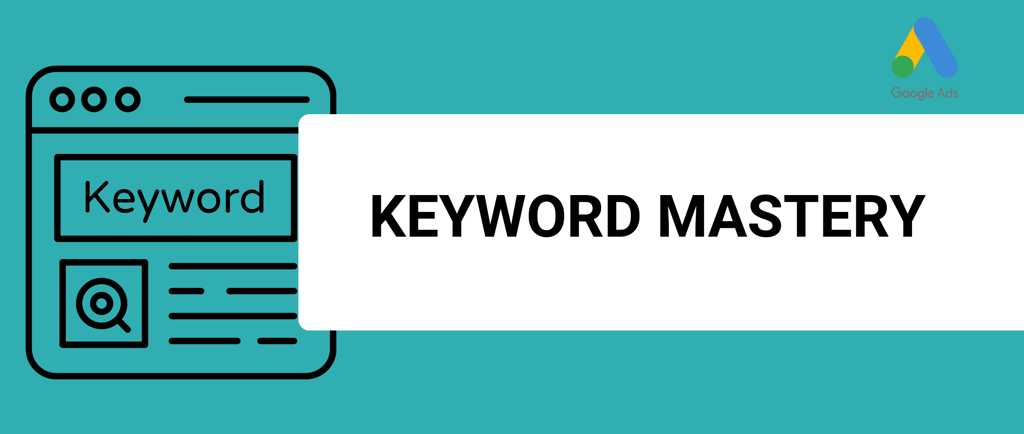Google Ads Keyword Match Types in 2025: Latest Strategies for Smarter Targeting
Learn how to use Google Ads Keyword Match Types—broad, phrase, and exact—to effectively target the right audience, increase conversions, and optimize your ad spend.
CAMPAIGN OPTIMIZATION
12/13/20246 min read


Understanding Google Ads Keyword Match Types is essential to running a successful Google Ads campaign.
These match types define how closely a user’s search query must align with your keyword for your ad to appear, directly impacting the relevance and performance of your ads.
Using keyword match types can drastically increase your campaign efficiency and help you avoid wasting your ad budget.
This guide will walk you through the different types of keyword matches—broad, phrase, and exact—and provide you with actionable tips on starting and scaling your campaigns.
By mastering these match types, you can optimize your Google Ads strategy for better conversions, clicks, and ultimately, higher profitability.
What Are Google Ads Keyword Match Types?
Google Ads Keyword Match Types are the rules that define how closely a user’s search term must match your keyword for your ad to be triggered. Google provides three main keyword match types:
1. Broad Match – Targets a wide variety of searches, including related terms, misspellings, and synonyms.
2. Phrase Match – Targets search queries that contain your keyword in a specific order.
3. Exact Match – Targets queries that exactly match your keyword or very close variations.
Each match type has its strengths and weaknesses, and using them effectively is crucial to a successful Google Ads campaign.
Practical Tips for Using Google Ads Keyword Match Types
When you’re setting up your campaign, it’s important to know which keyword match type to use and when. Here’s a practical strategy you can follow:
Start with Exact Match to Test the Waters
When you’re first starting a Google Ads campaign, especially if you’re working with a limited budget or are unsure of your target audience’s exact search behavior, it’s a smart move to begin with exact match keywords. This gives you the most control over who sees your ads, ensuring that your ads are only shown to users searching for precisely the terms you want.
Why Start with Exact Match?
• Precision Targeting: Exact match ensures your ad is triggered only by searches that closely match your keyword. This minimizes wasted ad spend on irrelevant clicks.
• Better Data Collection: By focusing on exact match, you can gather data on how well specific keywords perform, allowing you to refine your campaign and target audience.
• Cost Efficiency: Since exact match tends to have higher relevance, you’ll likely see higher click-through rates (CTR) and lower cost per click (CPC) compared to broader match types.
Practical Example of Exact Match Usage:
Let’s say you’re running an ad for “custom leather wallets.” With exact match, your ad will only appear for users who type in searches like “buy custom leather wallets” or “custom leather wallet store.” This ensures you’re only paying for clicks from highly interested users.
The exact match keyword is defined within the brackets: "[buy custom leather wallers]"
Once you have some initial data and understand which keywords are driving conversions, you can begin scaling your campaign by experimenting with broader match types.
Expand with Phrase Match for More Reach
Once you’ve collected enough data from exact match and are confident about which keywords are converting, the next step is to expand your campaign by incorporating phrase match keywords. Phrase match allows your ad to appear for searches that include your keyword in the correct order but with additional words before or after.
Why Scale with Phrase Match?
• Increased Reach with Controlled Relevance: Phrase match offers more flexibility than exact match while still maintaining a certain level of control over which searches trigger your ad.
• Optimize for Intent: Phrase match targets users who may be adding qualifiers or context to their search queries (e.g., “affordable custom leather wallets” or “best place to buy custom leather wallets”), capturing a wider audience but still maintaining relevance.
Practical Example of Phrase Match Usage:
Using the same “custom leather wallets” keyword, with phrase match, your ad could now show for queries like “handmade custom leather wallets” or “luxury custom leather wallets.” This increases your ad’s reach without compromising too much on relevance.
You can define a phrase match keyword by using parentheses: "customer leather wallers"
Use Broad Match to Scale and Capture New Audiences
Once you’ve refined your campaign and optimized your targeting, it’s time to consider broad match. Broad match will show your ad for a wide variety of search terms, including those that may only loosely relate to your keyword. While it offers the highest reach, it can also be risky if not used correctly, as it may lead to irrelevant clicks and wasted budget.
When to Use Broad Match?
• When Paired with Smart Bidding: Broad match works best when combined with Google’s smart bidding strategies like Target CPA (Cost-Per-Acquisition) or Target ROAS (Return on Ad Spend). These strategies help Google’s algorithm optimize for conversions, ensuring that your ads are shown to users more likely to convert, even with a broader set of search terms. But before switching to one of the smart-bidding strategies, make sure you have accumulated a sufficient amount of data (above 30 primary conversions).
• For Campaign Expansion: Once you’ve gathered enough data and are confident in your targeting, broad match can help you expand your audience, discover new keywords, and increase your reach.
Practical Example of Broad Match Usage:
If you use broad match for “custom leather wallets,” your ad could appear for searches like “best leather accessories” or “wallet stores near me.” While some of these might seem irrelevant, Google’s smart algorithms can fine-tune when and where your ad appears based on user behavior, ensuring better chances for conversion.
Pro Tip:
To minimize the risk of irrelevant clicks, use negative keywords alongside broad match. Negative keywords prevent your ads from appearing for searches that you know won’t convert, such as “free custom leather wallets” or “cheap custom wallets.” The most common practice is to list the negative keyword inside the brackets [ ] to avoid blocking off anymore irrelevant keywords.
The Importance of Smart Bidding with Broad Match
A key mistake many advertisers make with broad match is using it without pairing it with smart bidding strategies. Without smart bidding, you run the risk of your ad showing up for too many irrelevant queries, draining your budget. Pairing broad match with smart bidding algorithms like Target CPA ensures your ads are optimized for users who are more likely to convert.
Keyword Match Type Combinations for Maximum Effectiveness
Combining Google Ads Keyword Match Types strategically within your campaigns can offer the best results. Here’s a recommended approach:
• Start with Exact Match: Begin with exact match keywords to gather data and ensure your ads are highly relevant.
• Expand with Phrase Match: Once you know which keywords work, scale up using phrase match to reach a slightly broader but still relevant audience.
• Leverage Broad Match for Volume: Finally, use broad match for campaign expansion, ensuring you pair it with smart bidding strategies to avoid wasted ad spend.
The Importance of Smart Bidding with Broad Match
A key mistake many advertisers make with broad match is using it without pairing it with smart bidding strategies. Without smart bidding, you run the risk of your ad showing up for too many irrelevant queries, draining your budget. Pairing broad match with smart bidding algorithms like Target CPA ensures your ads are optimized for users who are more likely to convert.
Keyword Match Type Combinations for Maximum Effectiveness
Combining Google Ads Keyword Match Types strategically within your campaigns can offer the best results. Here’s a recommended approach:
• Start with Exact Match: Begin with exact match keywords to gather data and ensure your ads are highly relevant.
• Expand with Phrase Match: Once you know which keywords work, scale up using phrase match to reach a slightly broader but still relevant audience.
• Leverage Broad Match for Volume: Finally, use broad match for campaign expansion, ensuring you pair it with smart bidding strategies to avoid wasted ad spend.
Common Mistakes to Avoid with Google Ads Keyword Match Types
• Using Broad Match Without a Smart Bidding Strategy: This can lead to wasted ad spend on irrelevant clicks.
• Relying Only on Exact Match: While exact match offers great control, using it exclusively can limit your reach and growth potential.
• Failing to Use Negative Keywords: Not utilizing negative keywords with broad match can result in your ads showing for irrelevant search queries.
Conclusion
Mastering Google Ads Keyword Match Types is key to creating effective campaigns that drive results.
Start with exact match to fine-tune your targeting, expand with phrase match for more reach, and scale with broad match to capture new audiences—while always using smart bidding to keep your budget in check.
Ultimately you have to reflect on the results delivered by different match types and find out what works the best for your case.
By carefully choosing and combining keyword match types, you’ll optimize your Google Ads strategy, reach the right audience, and see greater returns on your investment.
Ready to take your Google Ads campaigns to the next level?
Contact us for expert Google Ads management and consultation services to boost your ad performance and drive conversions!
CONTACTS
incomewithdigitalmarketing@gmail.com
BOOK WITH US
SERVICES
Google Ads Assisstance
Google Analytics Setup
Google My Business Management
